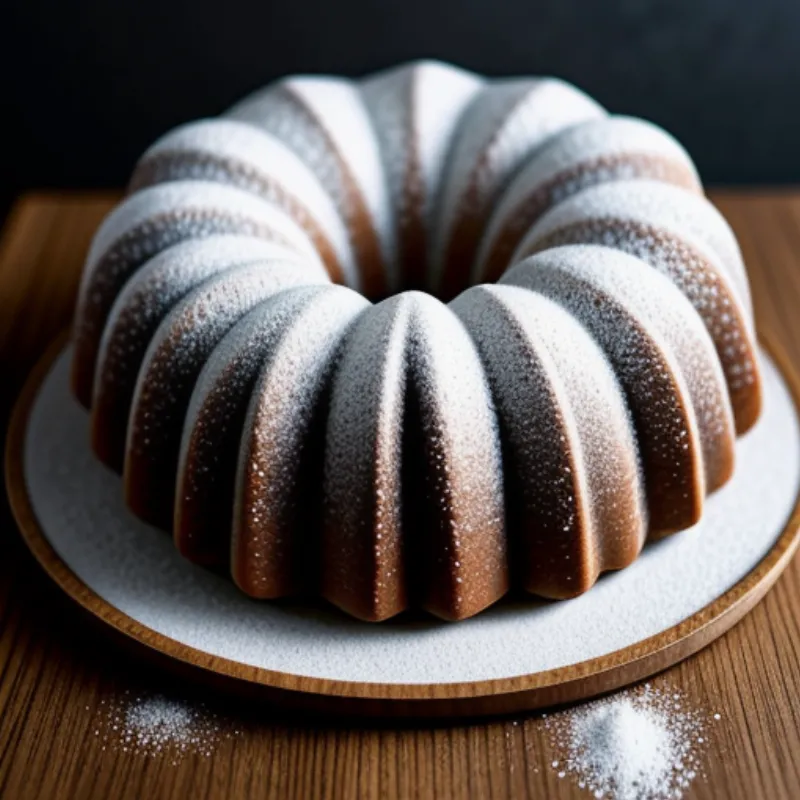Pandoro, the golden star of Italian Christmas desserts, is a testament to the magic of time-honored baking traditions. This light-as-air sweet bread, with its delicate vanilla and citrus aroma, is a festive treat that will transport you straight to the heart of an Italian holiday celebration. Today, we’re unlocking the secrets to making this showstopper bread right in your own kitchen. Don’t worry, it’s easier than you think!
What is Pandoro?
Originating from Verona, Italy, Pandoro, literally meaning “golden bread,” gets its name from its rich yellow color derived from the high content of eggs and butter. Unlike its cousin, Panettone, Pandoro doesn’t traditionally include candied fruits or raisins. Instead, its flavor profile shines with vanilla and citrus notes, often enhanced by a dusting of vanilla-scented powdered sugar.
Ingredients You’ll Need
Get ready for a baking adventure with these key ingredients:
For the Dough:
- 500g strong bread flour, plus extra for dusting
- 180g granulated sugar
- 4 large eggs, at room temperature
- 200g unsalted butter, softened to room temperature, plus extra for greasing
- 14g active dry yeast (or 21g fresh yeast)
- 120ml lukewarm milk
- Zest of 1 lemon
- Zest of 1 orange
- 1 teaspoon vanilla extract
- Pinch of salt
For the Glaze (optional):
- 50g powdered sugar
- 1-2 tablespoons milk
For Dusting:
- Vanilla-scented powdered sugar
Tools of the Trade
Before we begin, gather these baking essentials:
- Stand mixer fitted with a dough hook (or a large bowl for kneading by hand)
- Plastic wrap or a clean kitchen towel
- 9-inch (23cm) Pandoro mold or a similar sized Bundt pan
- Pastry brush (optional)
- Wire rack for cooling
Let’s Get Baking: Step-by-Step Guide
Making the Dough (the heart of the Pandoro)
- Activate the yeast: In the bowl of your stand mixer, combine the lukewarm milk and yeast. Stir gently and let stand for 5-10 minutes, or until the yeast is foamy.
- Combine the wet ingredients: Add the sugar, eggs, vanilla extract, lemon zest, and orange zest to the yeast mixture. Use the paddle attachment of your stand mixer (or a whisk if working by hand) to combine until well incorporated.
- Gradually incorporate the flour: Switch to the dough hook attachment. Slowly add the flour, one cup at a time, to the wet ingredients while the mixer is running on low speed. Knead for about 5 minutes, or until the dough starts to come together.
- Add the butter: With the mixer still running, add the softened butter, a tablespoon at a time, ensuring each addition is fully incorporated before adding the next.
- Kneading time: Once all the butter is added, continue kneading for at least 15-20 minutes. The dough should be smooth, elastic, and slightly sticky. If kneading by hand, be prepared for a good workout!
- First rise: Shape the dough into a ball and place it in a lightly greased bowl, turning to coat. Cover with plastic wrap or a clean kitchen towel and let rise in a warm, draft-free place for 1-2 hours, or until doubled in size.
Shaping the Pandoro (the fun part!)
- Punch down the dough: Gently punch down the risen dough to release the air.
- Second rise: Place the dough into the greased Pandoro mold or Bundt pan. Cover loosely with plastic wrap and let rise again for another hour, or until the dough reaches almost the top of the mold.
Baking the Pandoro (the moment of truth!)
- Preheat the oven: Preheat your oven to 350°F (175°C).
- Bake: Bake the Pandoro for 40-50 minutes, or until golden brown. To check for doneness, insert a wooden skewer into the center of the bread – it should come out clean.
Cooling and Finishing Touches
- Cool completely: Once baked, carefully remove the Pandoro from the oven and let it cool completely in the mold before inverting it onto a wire rack.
- Glaze (optional): While the Pandoro is still warm, you can brush it with a simple glaze made by whisking together powdered sugar and milk. This will add a touch of sweetness and shine.
- Dust with powdered sugar: Once cooled, generously dust the Pandoro with vanilla-scented powdered sugar just before serving.
 Pandoro Cake in a Bundt Pan
Pandoro Cake in a Bundt Pan
Tips and Tricks for Pandoro Perfection
- Use high-quality ingredients: Since Pandoro relies on simple flavors, using the best quality butter, flour, and vanilla extract will make a noticeable difference.
- Don’t rush the rising process: Allowing the dough to rise properly is crucial for a light and airy texture.
- Adjust baking time as needed: Oven temperatures can vary, so keep an eye on your Pandoro while it bakes and adjust the baking time accordingly.
- Get creative with the glaze: Add a teaspoon of lemon or orange juice to your glaze for an extra citrusy kick.
FAQs: Your Pandoro Questions Answered
Q: Can I make Pandoro without a stand mixer?
A: Absolutely! You can knead the dough by hand, but be prepared for a good arm workout.
Q: What can I substitute for a Pandoro mold?
A: A 9-inch (23cm) Bundt pan works well as a substitute.
Q: How should I store my Pandoro?
A: Once cooled completely, wrap the Pandoro tightly in plastic wrap and store it at room temperature for up to 3 days.
 Sliced Pandoro Cake
Sliced Pandoro Cake
Conclusion: Enjoy the Sweet Reward of Your Labor
Making Pandoro might seem like a challenge, but with a little patience and these detailed instructions, you’ll be rewarded with a truly special treat. Share the magic of this Italian Christmas tradition with your loved ones this holiday season and watch their faces light up with each delicious bite. Happy baking!
